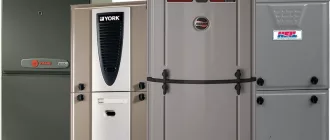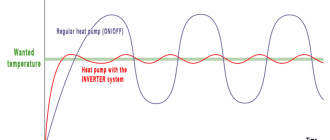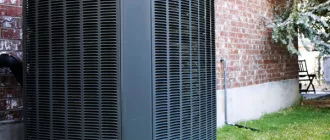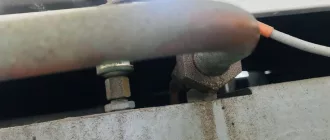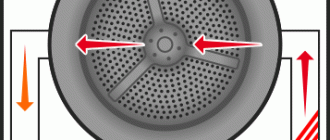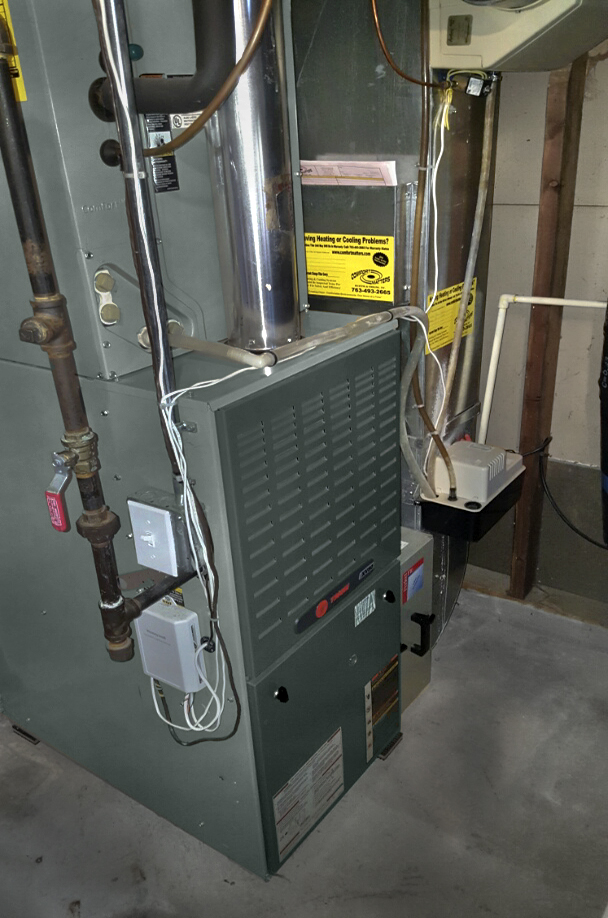
Deciding Between Furnace Repair or Replacement: Choosing the Best Option for Heating your Home
When faced with a malfunctioning furnace, homeowners often find themselves at a crossroads, contemplating whether to opt for a repair or replacement. The quest for indoor warmth becomes paramount as the winter chill sets in, making this decision all the more critical. Both repair and replacement options present their own set of advantages and disadvantages, requiring careful consideration.
Repairing a furnace seems like the obvious choice for those on a tight budget. It offers a cost-effective way to fix the existing system and restore warmth to the home. However, repairs may only provide a temporary solution, and homeowners should be prepared for potential breakdowns in the future. Additionally, an aging furnace may already have outdated features and lower energy efficiency, which can result in higher utility bills.
On the other hand, opting for a furnace replacement offers several benefits. A new furnace brings improved energy efficiency, leading to lower heating costs and enhanced indoor comfort. It also provides an opportunity to upgrade to a more modern and reliable system, equipped with advanced features and technology. Although the initial cost of replacement may be higher, the long-term savings in energy bills and the peace of mind it brings can outweigh the investment.
In conclusion, making the choice between furnace repair and replacement requires careful evaluation of various factors. While repair may seem like a cost-effective solution, it is essential to consider the age and condition of the existing furnace. A furnace replacement, though a more significant financial commitment, can provide greater long-term benefits in terms of energy efficiency, comfort, and reliability. Ultimately, homeowners should weigh their options and consult with professionals to make an informed decision that ensures indoor warmth throughout the winter season.
Factors to Consider
When deciding between furnace repair and replacement for indoor warmth, there are several key factors to consider:
| Age of the Furnace | If your furnace is more than 15 years old, it may be more cost-effective to replace it rather than repair it. Older furnaces are less energy-efficient and may require more frequent repairs. |
| Repair Costs | Consider the cost of the repair compared to the cost of a new furnace. If the repair is more than 50% of the cost of a replacement, it may be wiser to invest in a new furnace. |
| Energy Efficiency | Newer furnaces are typically more energy-efficient, which can result in significant savings on your energy bills. Factor in the potential long-term energy savings when making your decision. |
| Frequency of Repairs | If your furnace has been breaking down frequently and requiring multiple repairs, it may be a sign that it is nearing the end of its lifespan. In this case, a replacement may be a more reliable and cost-effective choice. |
| Comfort and Reliability | Consider how comfortable and reliable your current furnace is. If it is not keeping your indoor space consistently warm or if it has been giving you trouble, it may be time for a replacement. |
By considering these factors, you can make an informed decision about whether to repair or replace your furnace for optimal indoor warmth.
Age and Condition
When making the choice between furnace repair and replacement for indoor warmth, it’s important to consider the age and condition of your current furnace. The lifespan of a furnace typically ranges from 15 to 20 years. If your furnace is nearing the end of its lifespan or is in poor condition, it may be more cost-effective to opt for a replacement rather than investing in ongoing repairs.
An older furnace may not be as energy efficient as newer models, resulting in higher energy bills and reduced comfort. Additionally, older furnaces are more prone to breakdowns and may require frequent repairs, leading to increased maintenance costs.
On the other hand, if your furnace is relatively new and in good condition, it may be worth considering repair instead of replacement. A skilled technician can assess the extent of the issue and determine if a repair is a viable solution. This can save you money upfront and prolong the lifespan of your furnace, providing you with reliable indoor warmth for years to come.
Ultimately, the decision between furnace repair and replacement depends on the age and condition of your current furnace, as well as your budget and long-term goals for indoor comfort. Consulting with a reputable HVAC professional can help you make an informed decision that best suits your needs.
Cost-effectiveness Analysis
When considering whether to repair or replace your indoor furnace for warmth, it is important to conduct a cost-effectiveness analysis. This analysis involves evaluating the potential costs and benefits of both options in order to determine the most financially advantageous choice.
Repairing a furnace can often be a more cost-effective solution, especially if the existing furnace is relatively new and the repair is minor. In these cases, the expenses associated with repairing the furnace are usually significantly lower compared to the cost of purchasing and installing a new furnace.
On the other hand, replacing an old furnace with a new one may be a more cost-effective choice in the long run. Older furnaces often have lower energy efficiency ratings, resulting in higher utility bills. By replacing an outdated furnace with a newer, more energy-efficient model, you can potentially save money on energy costs over time.
Additionally, it is important to consider the potential frequency of future repairs. If your furnace has required multiple repairs in recent years, it may be a more cost-effective choice to replace it entirely. Continually repairing an older furnace can quickly add up in terms of both time and money.
Ultimately, the cost-effectiveness analysis will depend on various factors, including the age and condition of your current furnace, the severity of the repairs needed, and your long-term energy savings goals. Consulting with a professional HVAC technician can provide valuable insight and guidance to help you make the best decision for your specific situation.
Energy Efficiency
When considering the choice between furnace repair and replacement, one important factor to consider is energy efficiency. A well-functioning furnace is essential for maintaining a comfortable level of warmth indoors.
Older furnaces tend to be less energy efficient compared to newer models. Over time, furnace components can wear out and become less effective in heating your home. This can lead to higher energy consumption and increased utility bills. Choosing to repair an old furnace may provide a temporary solution, but it may not address the underlying energy efficiency problem.
On the other hand, replacing your old furnace with a newer and more energy-efficient model can have several benefits. Modern furnaces are designed to maximize energy efficiency, resulting in lower energy consumption and reduced heating costs. Additionally, newer models often come with advanced features like programmable thermostats and zoning capabilities, allowing for better control over your indoor temperature and further optimizing energy usage.
When considering whether to repair or replace your furnace, it’s important to weigh the potential energy savings and long-term financial benefits of a replacement. Investing in a new, energy-efficient furnace may initially require a higher upfront cost, but it can ultimately lead to significant savings in the long run. A more efficient furnace can also contribute to a healthier environment by reducing greenhouse gas emissions associated with energy consumption.
| Temporary solution | Long-term energy savings |
| Higher energy consumption | Lower energy consumption |
| Increased utility bills | Reduced heating costs |
In conclusion, considering energy efficiency is crucial when making the choice between furnace repair and replacement. By opting for a newer and more energy-efficient furnace, you can ensure optimal indoor warmth, reduce energy consumption, and save on heating costs in the long run.
Safety Concerns
When making the choice between furnace repair and replacement for indoor warmth, safety should be a top priority. A malfunctioning or aging furnace can pose various safety hazards, putting you and your loved ones at risk.
If your furnace is in need of frequent repairs or if it is more than 15 years old, it may be prone to issues such as gas leaks, carbon monoxide leaks, or electrical problems. These safety concerns can be life-threatening if not addressed promptly.
Gas leaks can occur due to cracked heat exchangers or damaged gas valves. Carbon monoxide leaks can result from the incomplete burning of fuel in your furnace, leading to exposure to this odorless and deadly gas. Electrical problems can cause fires and other serious safety hazards.
In addition, an outdated furnace may not have modern safety features that are available in newer models. Newer furnaces often come with built-in safety mechanisms such as automatic shut-off systems that activate when abnormal conditions are detected, reducing the risk of accidents and injuries.
Replacing your furnace ensures that you have a reliable and safe source of indoor warmth. Newer models are designed to meet stringent safety standards and regulations, providing you with peace of mind.
It is important to consider the safety concerns associated with an aging or malfunctioning furnace when deciding between repair and replacement. Taking proactive steps to ensure the safety of your household is crucial for a comfortable and worry-free winter season.
Environmental Impact
When making the choice between repairing or replacing your indoor furnace for warmth, it’s important to consider the environmental impact of your decision.
Repairing your furnace can have a positive environmental impact. By fixing any issues with your current furnace, you can extend its lifespan and prevent it from ending up in a landfill prematurely. This can help reduce the amount of waste generated and conserve natural resources.
On the other hand, replacing your furnace can also have environmental benefits. Newer furnaces are often more energy-efficient, which can result in lower greenhouse gas emissions and reduce your carbon footprint. Additionally, modern furnaces may utilize eco-friendly materials and technology, further reducing their environmental impact.
It’s important to weigh the environmental impact along with other factors such as the cost of repair versus replacement, the efficiency of your current furnace, and any available rebates or incentives for upgrading to a newer model. By considering all these factors, you can make an informed decision that best aligns with your values and goals for both indoor warmth and sustainability.
Comfort and Indoor Air Quality
When it comes to choosing between furnace repair and replacement, one of the key factors to consider is the comfort and indoor air quality of your home. A properly functioning furnace is essential for maintaining a comfortable and warm indoor environment.
If your furnace is in need of repair, you may notice a decrease in comfort and warmth. It may struggle to heat your home evenly, leaving certain areas colder than others. This can lead to discomfort and inconvenience, especially during the winter months when you rely on your furnace the most.
In addition to comfort, the indoor air quality of your home is also affected by the condition of your furnace. A malfunctioning furnace can contribute to poor indoor air quality, which can be detrimental to your health and well-being. Dust, allergens, and other pollutants can accumulate in your ducts and circulate throughout your home, causing respiratory issues and allergies. Regular furnace maintenance and timely repairs can help ensure that your indoor air quality remains clean and healthy.
When making the choice between furnace repair and replacement, it is important to consider the impact on your comfort and indoor air quality. While repairs may temporarily solve the issue and restore warmth, they may not address underlying problems that affect your indoor air quality. On the other hand, a new furnace installation can provide improved comfort and better indoor air quality, especially if your current furnace is outdated or in poor condition.
Ultimately, the choice between furnace repair and replacement depends on the specific issues with your furnace and your priorities when it comes to comfort and indoor air quality. Consulting with a professional HVAC technician can help you make an informed decision and ensure that your home remains warm, comfortable, and healthy.
Upfront Costs
When it comes to making the choice between furnace repair and replacement for indoor warmth, upfront costs are an important factor to consider. Repairing a furnace can often be a more cost-effective option in the short term, as it requires less financial investment upfront. However, it is important to weigh the long-term costs as well.
In some cases, the cost of repairs may add up over time, especially if the furnace is older and requires frequent repairs. In such situations, opting for a furnace replacement may be a more financially prudent choice. Although the upfront costs of a replacement may be higher, a new furnace can provide greater energy efficiency and reliability, resulting in potential savings on monthly utility bills and fewer repair expenses in the long run.
Furthermore, it is worth considering any warranty or financing options that may be available when replacing a furnace. Some manufacturers offer warranties that cover the cost of parts or labor for a certain period of time, which can provide financial peace of mind. Additionally, financing options such as low-interest loans or payment plans may help to alleviate the burden of the upfront costs of a furnace replacement.
In conclusion, while repair may offer a more affordable solution for immediate warmth in the indoor environment, the long-term costs and benefits of a furnace replacement should be considered. Assessing the age, efficiency, and reliability of the existing furnace, as well as weighing warranty and financing options, can help to make an informed decision that is both cost-effective and ensures long-lasting warmth in the home.
Long-term Savings
When it comes to making the choice between furnace repair and replacement for indoor warmth, considering long-term savings is crucial. While furnace repair may seem like a more cost-effective option at first, it is important to analyze the potential long-term savings that come with replacing an old, inefficient furnace.
By opting for a furnace replacement, you can benefit from the latest energy-efficient technologies that are designed to provide optimal indoor warmth while reducing energy consumption. These newer furnace models are often equipped with features such as variable-speed motors, programmable thermostats, and smart controls, which can help to significantly lower your heating bills over time.
In addition to energy savings, a new furnace can also help you save money on repairs and maintenance in the long run. Older furnaces are more prone to breakdowns and require frequent repairs, which can be costly. By investing in a new furnace, you can enjoy the peace of mind knowing that it is reliable and less likely to require repairs in the near future.
Furthermore, a new furnace typically comes with a warranty that covers the cost of any necessary repairs during a specified period. This can offer additional savings and protection against unexpected expenses.
In summary, while the initial cost of furnace replacement may be higher than the cost of repair, the long-term savings make it a worthwhile choice. Not only will you benefit from increased energy efficiency and lower heating bills, but you will also reduce the need for costly repairs and enjoy the added protection of a warranty.
Warranty and Maintenance
When it comes to making the choice between furnace repair and replacement for indoor warmth, considering the warranty and maintenance of your current furnace is crucial.
If your furnace is still under warranty, it may be beneficial to opt for repair. Many manufacturers offer warranties that cover parts and labor for a certain period of time. By choosing repair, you can take advantage of this warranty and avoid any out-of-pocket expenses.
However, if your furnace is no longer under warranty or if the cost of repair is high, it may be more cost-effective to consider replacement. In this case, investing in a new furnace with a warranty can provide you with peace of mind and protection against future repairs.
Regular maintenance is also an important factor to consider. Furnaces that are well-maintained tend to last longer and have fewer issues. If you have been diligent in maintaining your furnace and it has only minor issues, repair may be the right choice. On the other hand, if your furnace has been neglected or requires frequent repairs, it may be time to invest in a new one.
Ultimately, the decision between furnace repair and replacement for indoor warmth will depend on various factors, including the warranty and maintenance of your current furnace. It is recommended to consult a professional HVAC technician who can assess the condition of your furnace and provide expert advice on the most suitable option for your specific situation.
Heating System Reliability
When it comes to making the choice between furnace repair and replacement for indoor warmth, one important factor to consider is heating system reliability.
A furnace is responsible for providing heat to your home during the cold winter months, so it is crucial to ensure that it is reliable and able to consistently deliver the warmth you need.
If your furnace is constantly in need of repair or experiencing frequent breakdowns, it may be a sign that it is no longer reliable. Spending time and money on repairs may offer a temporary fix, but in the long run, the reliability of your heating system could continue to decline.
On the other hand, investing in a furnace replacement can provide you with a new and reliable heating system. Newer furnaces are built with advanced technology and are designed to provide efficient and consistent heat throughout your home.
By opting for a replacement, you can have peace of mind knowing that your heating system will be dependable and less likely to encounter frequent breakdowns. This can save you from the inconvenience of unexpected heating failures and the potential cost of emergency repairs.
Furthermore, a new furnace comes with a warranty, which can provide additional protection and assurance for its reliability.
Overall, when considering whether to repair or replace your furnace for indoor warmth, take into account the reliability of your heating system. Investing in a new furnace can provide you with a reliable source of warmth and save you from the hassle of constant repairs and breakdowns.
Impact on Home Value
When it comes to making the choice between furnace repair and replacement, one important factor to consider is the impact on home value. A well-functioning furnace is an essential component of a comfortable indoor environment. If your furnace is outdated or in need of constant repairs, it can affect the overall value of your home.
Homebuyers understand the importance of having a reliable and energy-efficient furnace. If your furnace is old and inefficient, it may be a red flag for potential buyers. They may see it as a major expense that they will have to address in the future. On the other hand, a new and efficient furnace can be a selling point for your home.
Replacing your furnace can also improve the energy efficiency of your home, which can have a positive impact on its value. An inefficient furnace can cause high energy bills and wasteful energy consumption, which can turn off potential buyers. By opting for a newer and more energy-efficient furnace, you can potentially increase your home’s value.
Additionally, a furnace replacement can give your home a modern and updated feel. Potential buyers are often drawn to homes that have been well-maintained and have modern amenities. A new furnace can contribute to this overall appeal and make your home more desirable in the market.
| – Increased home value |
| – Improved energy efficiency |
| – Modern and updated feel |
Ultimately, the impact on home value will depend on various factors, such as the age and condition of your current furnace, the local housing market, and the preferences of potential buyers. It’s important to weigh the cost of furnace repair against the potential increase in home value that a replacement can bring.
Installation Time and Disruption
When it comes to making the choice between furnace repair and replacement, understanding the installation time and disruption involved is essential. It is important to assess whether the indoor environment will be affected by the replacement process.
If you opt for furnace repair, the process is generally quicker and less disruptive. A technician will assess the issue, diagnose the problem, and provide a solution. Repairs can often be completed in a matter of hours, allowing you to quickly restore warmth to your home.
On the other hand, furnace replacement is a more time-consuming process. It involves the removal of the old furnace and the installation of a new one. This process can take several days, depending on the complexity of the installation. During this time, the indoor environment may be disrupted, and you may need to find alternative heating solutions.
It’s crucial to consider the time and disruption that a furnace replacement may cause. If your current furnace is beyond repair or if you’re looking to upgrade to a more efficient model, the short-term inconvenience of installation may be worth the long-term benefits.
Government Rebates and Incentives
Making the choice between repair or replacement of your furnace for indoor warmth can often come down to cost. Fortunately, there are government rebates and incentives available that can help decrease the financial burden.
Many local, state, and federal programs offer rebate programs for homeowners who choose to upgrade their older, less efficient furnaces. These rebates can help offset the cost of purchasing a new furnace or repairing an existing one. By taking advantage of these incentives, homeowners can not only save money on their heating bills but also contribute to a healthier environment by reducing their carbon footprint.
In addition to rebates, some utility companies also provide incentives for furnace upgrades and repairs. These incentives can include discounted installation costs, reduced energy rates, or special financing options. It is worth contacting your utility company to see if they offer any programs that can help make the decision between furnace repair or replacement easier.
| Local, state, and federal rebate programs |
| Utility company incentives |
| Discounted installation costs |
| Reduced energy rates |
Before making a decision, it is essential to research and understand the available rebates and incentives in your area. This will allow you to make an informed choice that not only provides indoor warmth but also maximizes your financial savings.
Professional Opinion and Consultation
Making the choice between furnace repair and replacement is a crucial decision for ensuring indoor warmth. It can be difficult to determine whether to invest in repairs or opt for a complete replacement. That’s where professional opinion and consultation come into play. Consulting with a heating specialist can provide invaluable insight into the condition and efficiency of your current furnace.
A professional will assess your furnace, taking into consideration factors such as its age, efficiency, and the extent of the repairs needed. Based on this evaluation, they will offer their expert opinion on whether repair is a viable option or if a replacement is necessary to keep your home warm and comfortable.
During the consultation, the specialist will discuss the potential benefits of both repair and replacement. They will explain the costs involved, expected lifespan of the furnace, and how each option can impact the overall efficiency of your heating system. With this information, you can make an informed decision that aligns with your budget and long-term heating needs.
The professional consultation serves as a critical step in the decision-making process. It allows you to understand the pros and cons of each choice and determine the most cost-effective and efficient solution for your home. Additionally, consulting with a heating specialist ensures that you receive accurate and reliable information, enabling you to make a well-informed choice about whether to repair or replace your furnace.
In conclusion, when it comes to deciding between furnace repair and replacement, seeking a professional opinion and consultation provides valuable guidance. Their expertise will help you weigh the options and make a choice that prioritizes warmth, efficiency, and your budget.
Q&A:
How do I know if my furnace needs repair or replacement?
If your furnace is older than 15 years, experiencing frequent breakdowns, and requires costly repairs, it may be more cost-effective to replace it. However, minor issues such as a clogged air filter or a faulty thermostat can usually be repaired.
What are the benefits of repairing my furnace instead of replacing it?
Repairing your furnace can be a more affordable option, especially if the issue is minor and doesn’t require a major overhaul. It can also extend the lifespan of your furnace and maintain its efficiency. Additionally, if your furnace is still under warranty, repairing it can save you money.
When should I consider replacing my furnace instead of repairing it?
You should consider replacing your furnace if it is more than 15 years old, requires frequent repairs, or if the cost of the repair is close to or exceeds the cost of a new furnace. Additionally, if your furnace is not energy-efficient and you’re looking to reduce your energy bills, a replacement may be the better option.
What are the advantages of replacing my furnace?
Replacing your furnace can provide several advantages. Firstly, it can improve the energy efficiency of your home, leading to lower heating costs. A new furnace is also less likely to break down, reducing the need for costly repairs. Additionally, modern furnaces often come with advanced features such as programmable thermostats, which can enhance comfort and convenience.
How can I decide whether to repair or replace my furnace?
When deciding whether to repair or replace your furnace, consider factors such as the age of your furnace, its repair history, the cost of repairs, and the energy efficiency of the unit. It can be helpful to consult with a trusted HVAC professional who can assess your furnace and provide personalized recommendations based on your specific situation.
My furnace is not working properly. Should I repair it or replace it?
It depends on the age and condition of your furnace. If it is relatively new and the repair is minor, it may be more cost-effective to repair it. However, if your furnace is old and requires frequent repairs, it may be more cost-effective in the long run to replace it.


